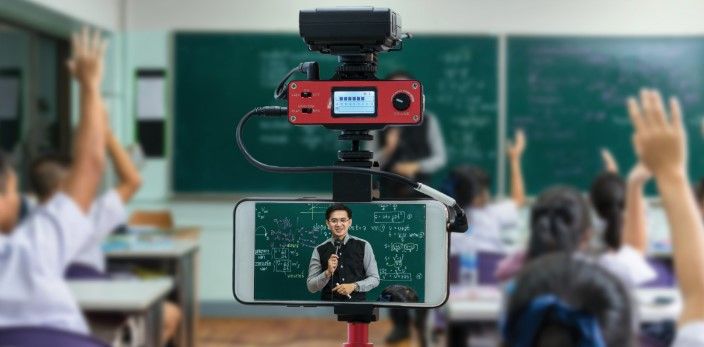
IEU-QNT Assistant Secretary Brad Hayes looks at what’s been a hot topic for members since the pandemic started: dual mode teaching.
Initially offered during the pandemic when the majority of students were learning from home, parental and employer expectations that it continues post-lockdowns and post-pandemic remain.
Lack of professional understanding
With teacher workloads at an all-time high – the expectation that one teacher can be asked to do the work of two permanently is unsustainable and disrespectful to the profession.
Facing a crisis unlike any experience in their lifetime, members did what was needed to enable students to continue to receive a quality education.
For those who provided dual mode teaching – the majority of students were learning from home.
Now there seems to be a growing expectation from some parents and employers that a teacher can continue to provide such dual mode teaching for a student who may be home unwell or who out of the physical classroom and travelling with their parents.
Media stories and images have perpetuated this idea – with the thought being that this is an “easy” thing to do given today’s technology.
Uniqueness of classroom learning remains
As IEU members know, nothing can replace the physical classroom and onsite learning. The ability to use one’s professional judgement within the classroom and interact directly with a student cannot be replicated online.
No matter what advances in technology, our classrooms remain unique spaces for learning and we need the resources and the time for teachers to be able to focus on what they do best in the classroom – not having to juggle on-site and online delivery of curriculum simultaneously.
Ongoing COVID-19 impacts
The ongoing expectation by some parents and employers of dual mode teaching comes at the same time schools continue to be impacted by staff and student absences due to COVID-19.
While staff and student absences probably peaked in late Term 1, we continue to experience COVID-19 disruptions in our schools and kindergartens.
As always, school staff are handling this situation with incredible resilience and professionalism.
Employers for their part though need to be focused on addressing the workload issues stemming from these disruptions, rather than adding further workload pressures on teachers.
The long-term solution is to better recognise and reward teachers, both in terms of improved salaries, and even more importantly a reduction in the workload pressures that are forcing many teachers to leave the profession they love.
Member action will make the difference
With workloads at an all-time high and the expectation of the continuation of dual mode teaching in many schools, IEU members must unite to make it clear that employers need to be focused on addressing the workload issues stemming from these disruptions, rather than adding further workload pressures on teachers.
The long-term solution is to better recognise and reward teachers, both in terms of improved salaries, and even more importantly, a reduction in the workload pressures that are forcing many teachers to leave the profession they love.
These issues are and will be the focus for IEU collective bargaining negotiations Australia-wide this year.
Together we can have our voice heard and make a difference to protect quality education in our schools.


































































































































